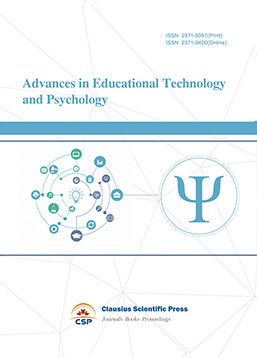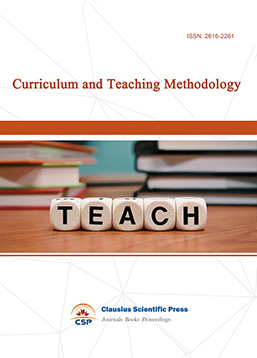Using computational physics methods to improve high school students' understanding of dynamics concepts
DOI: 10.23977/trance.2024.060617 | Downloads: 18 | Views: 898
Author(s)
Gong Yanxiang 1, Chen Shimin 2
Affiliation(s)
1 School of Physics and Electronic Engineering, Taishan University, Taian City, Shandong, 271000, China
2 Dongping County Senior High School, Dongping County, Taian, 271500, China
Corresponding Author
Gong YanxiangABSTRACT
With the continuous development of physics education, how to help high school students better understand the complex concepts of dynamics has become an important challenge in teaching. Traditional teaching methods have certain limitations in explaining abstract concepts such as the laws of motion and the relationship between velocity and acceleration, while computational physics methods can intuitively show the motion process and dynamic changes through numerical simulation and visualization techniques to help students understand the core principles of dynamics more deeply. This paper proposes an idea of using computational physics methods to assist the teaching of high school dynamics, and demonstrates the practical application and advantages of computational physics in teaching through examples of uniform linear motion, uniformly accelerated motion and parabolic motion. The study shows that this method can not only improve students' mastery of the concept of dynamics, but also cultivate their ability to analyze and solve problems, thus providing an effective and innovative means for high school physics teaching.
KEYWORDS
Computational physics methods, high school physics education, dynamics concepts, numerical simulation, educational innovationCITE THIS PAPER
Gong Yanxiang, Chen Shimin, Using computational physics methods to improve high school students' understanding of dynamics concepts. Transactions on Comparative Education (2024) Vol. 6: 126-131. DOI: http://dx.doi.org/10.23977/trance.2024.060617.
REFERENCES
[1] Laizet S, Li N.Incompact3d: A powerful tool to tackle turbulence problems with up to O(105) computational cores[J].International Journal for Numerical Methods in Fluids, 2011, 67(11):1735-1757.DOI:10.1002/fld.2480.
[2] Tornberg A K, Shelley M J.Simulating the dynamics and interactions of flexible fibers in Stokes flows[J].Journal of Computational Physics, 2015, 196(1):8-40.DOI:10.1016/j.jcp.2003.10.017.
[3] Morris P J, Long L N, Bangalore A.A Parallel Three-Dimensional Computational Aeroacoustics Method Using Nonlinear Disturbance Equations[J].Journal of Computational Physics, 1997, 133(1):56-74.DOI:10.1006/jcph. 1997. 5646.
[4] Beckett G, Mackenzie J A, Ramage A, et al.On The Numerical Solution of One-Dimensional PDEs Using Adaptive Methods Based on Equidistribution[J].Journal of Computational Physics, 2001, 167(2):372-392.DOI:10.1006/jcph. 2000. 6679.
[5] Luo Z, Tong L, Ma H.S hape and topology optimization for electrothermomechanical microactuators using level set methods[J].Journal of Computational Physics, 2009, 228(9):3173-3181.DOI:10.1016/j.jcp.2009.01.010.
[6] Huang Z , Lee J , Henkensmeier D ,et al.Effect of Molecular Structure and Coordinating Ions on the Solubility and Electrochemical Behavior of Quinone Derivatives for Aqueous Redox Flow Batteries[J].Journal of The Electrochemical Society, 2020, 167(16):160502 (8pp).DOI:10.1149/1945-7111/abc90c.
[7] Brodyn M S, Starkov V N.Methods of computational physics in the problem of mathematical interpretation of laser investigations [J].Quantum Electronics, 2007, 37(7):679–684.DOI:10.1070/QE2007v037n07ABEH013493.
[8] Ray D, Pinti O, Oberai A. Deep Learning and Computational Physics (Lecture Notes)[J].ArXiv, 2023, abs/2301.00942.DOI:10.48550/arXiv.2301.00942.
[9] Yu P, Lauder G V. Combining Computational Fluid Dynamics and Experimental Data to Understand Fish Schooling Behavior[J]. Integrative and Comparative Biology, 2024.DOI:10.1093/icb/icae044.
[10] Carrillo J A, Gamba I M, Majorana A, et al. 2D semiconductor device simulations by WENO-Boltzmann schemes: Efficiency, boundary conditions and comparison to Monte Carlo methods[J].Journal of Computational Physics, 2006, 214( 1):55-80.DOI:10.1016/j.jcp.2005.09.005.
| Downloads: | 13864 |
|---|---|
| Visits: | 525671 |

 Download as PDF
Download as PDF



